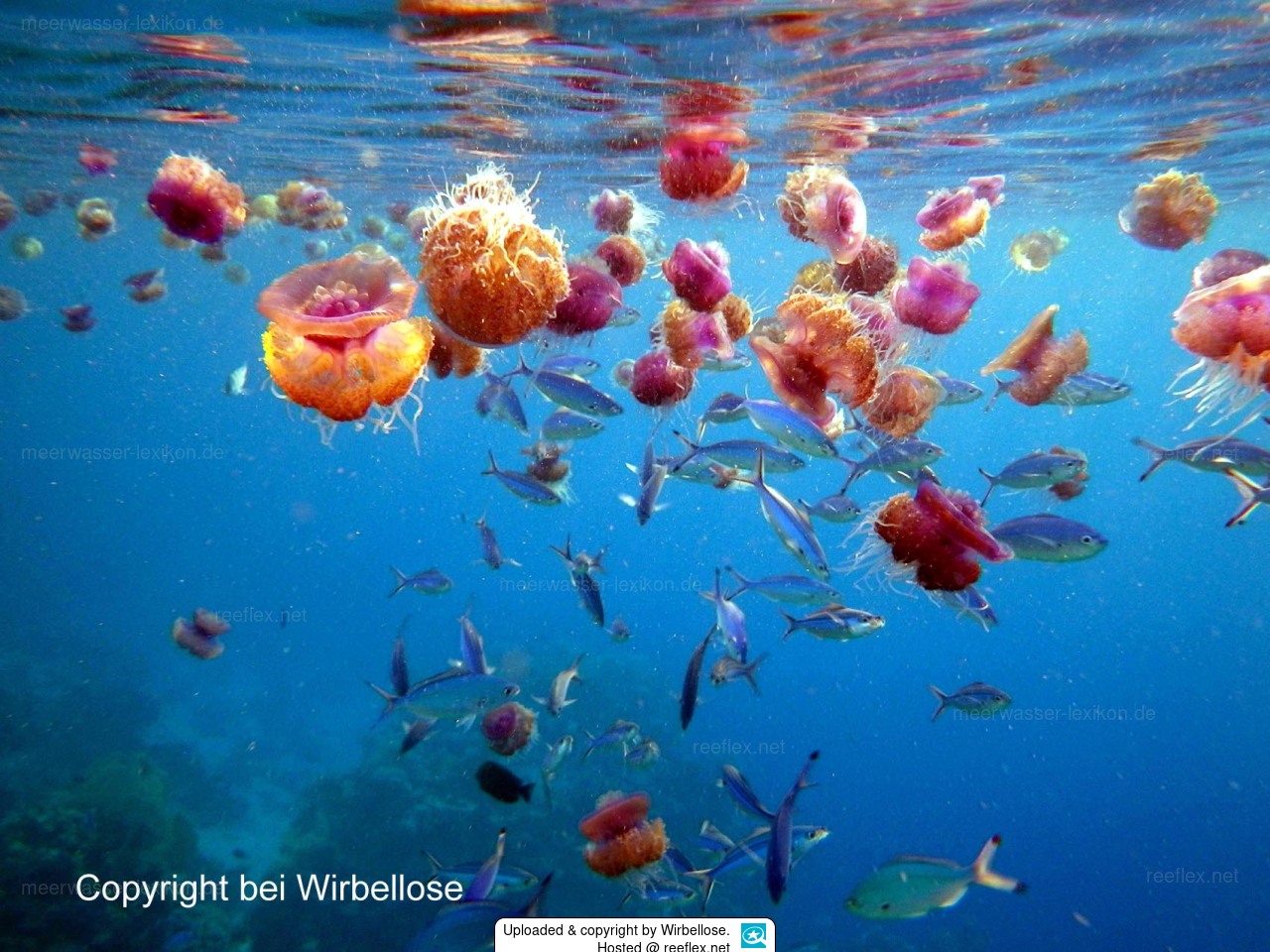Info
Cephea cephea is a jellyfish from the family Cepheidae in the order of root mouth jellyfish. Thus, Cephea cephea is also related to Cassiopeia sp., for example, and also has a similar life cycle with mobile phase as a medusa ("jellyfish") and stationary phase as a scyphistome ("polyp").
The umbrella of their medusae is pink to purple, has 10-50 protuberances in the center, and is clearly separated from the outer margin by a coronal furrow.
The eight strongly branched mouth arms appear brownish due to embedded zooxanthellae. The filaments (tentacles) arising from the mouth arms are relatively short but numerous and armed with cnidocytes.
As already written, Cephea cephea feeds not only by hunting zooplankton but also by a symbiosis with zooxanthellae. Nevertheless, it is at most suitable for keeping in a sufficiently large special aquarium and is probably reserved for public aquariums due to its maximum diameter of 40 cm and the special requirements associated with large jellyfish.
In Asia, dried jellyfish are considered a delicacy and a remedy. Fishing is relatively easy as it, like the other Rhizostomeae, can occur seasonally in large schools.
Occurrence: Tropical Indo-West Pacific
I do not have exact temperature data, but occurrence areas are assumed to be around 24-28°C surface temperature.
Synonymised names
Cephea forskalea Haeckel, 1880 · unaccepted (synonym)
Cephea rhizostomoidea Péron & Lesueur, 1810 · unaccepted (synonym)
Diplopilus Couthouyi Agassiz, 1862 · unaccepted (synonym)
Medusa cephea Forskål, 1775 · unaccepted (synonym)
Perirhiza nematophora Kishinouye, 1902 · unaccepted (synonym)







 Wirbellose
Wirbellose









